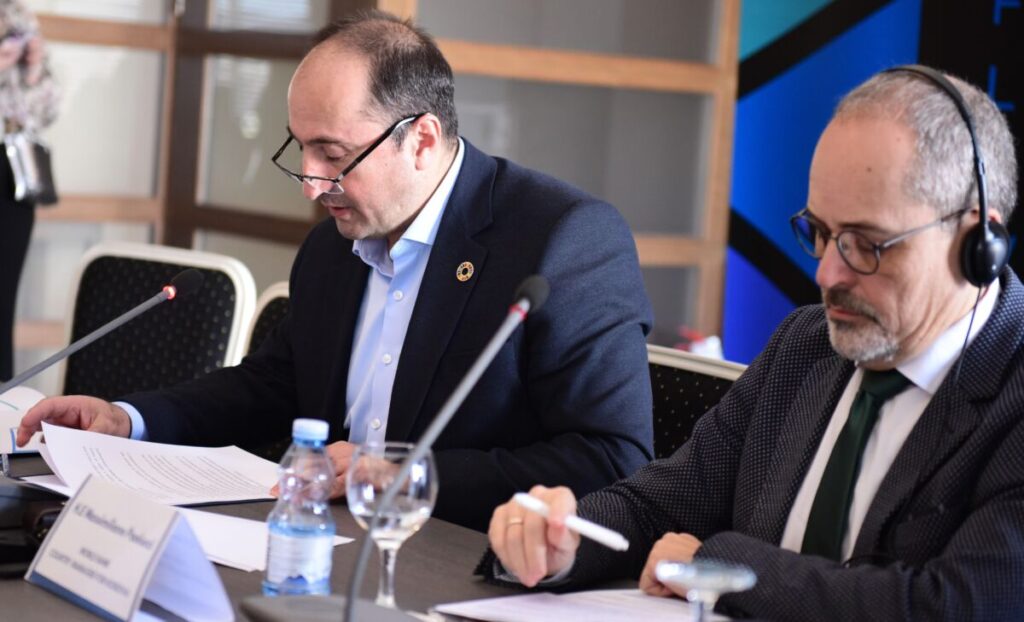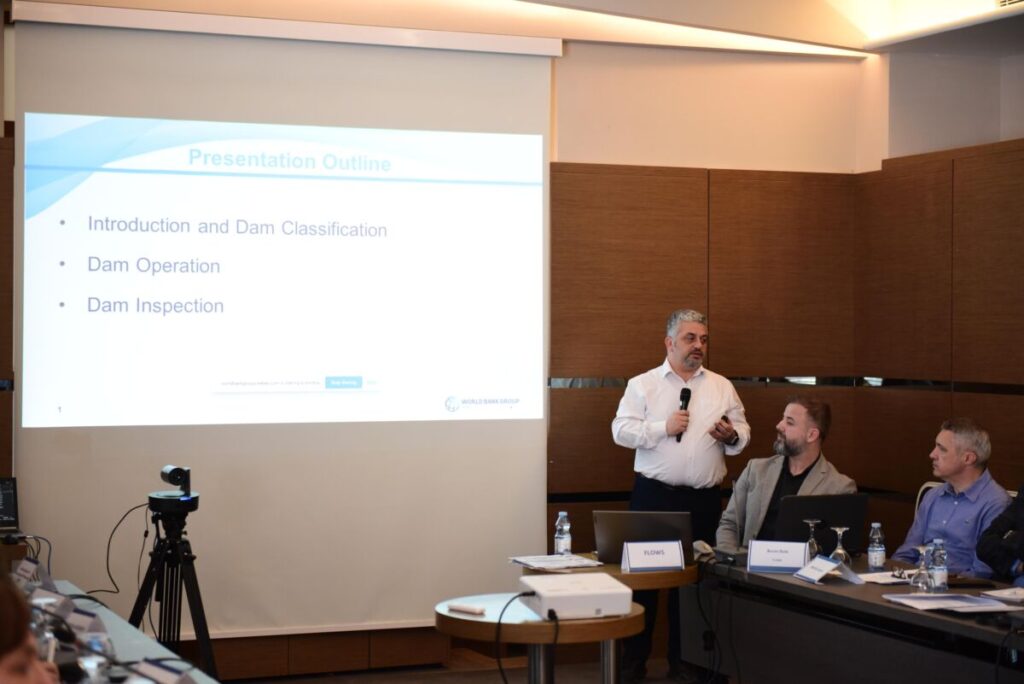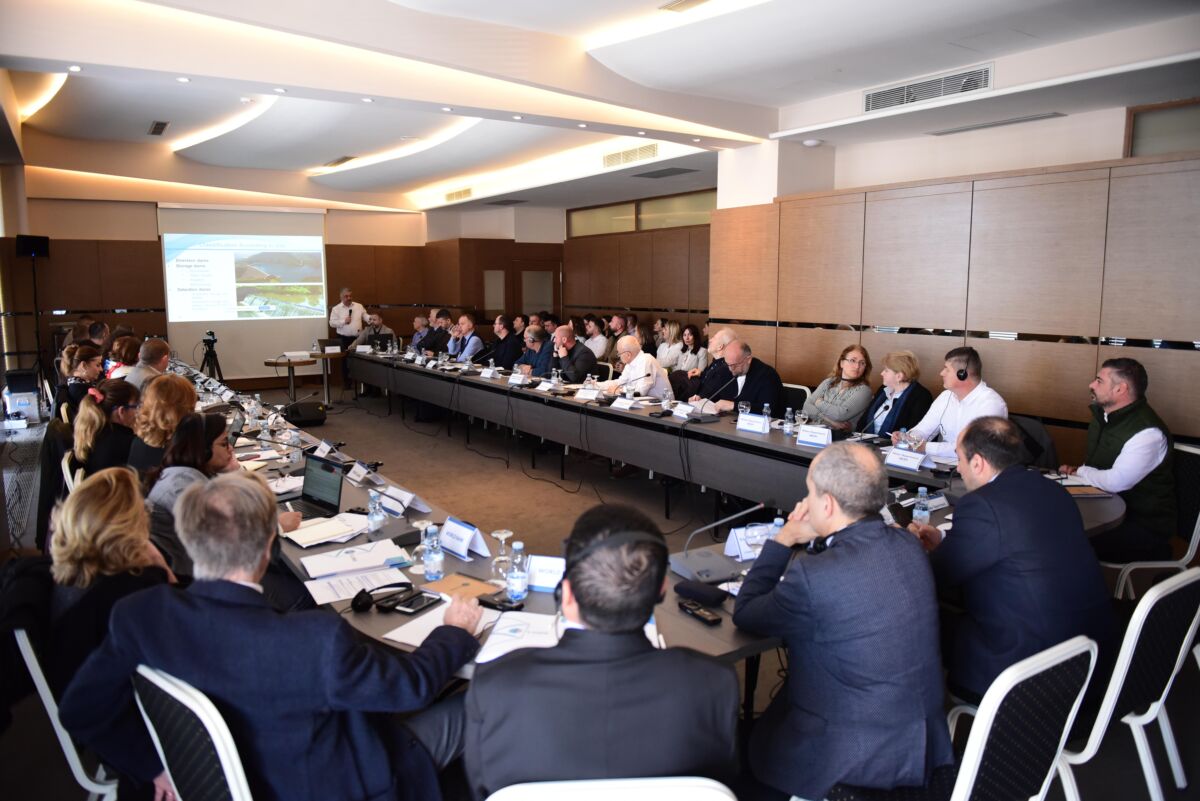The workshop “Global good practices on dam investment planning, Dam Safety and Dam operations” brought together in Prishtina, Kosova a diverse group of experts, practitioners, and stakeholders from across the globe to exchange insights, share experiences, and explore best practices in the management of dam infrastructure.
For two days (27,28 February), experts unveiled key knowledge about challenges with whom the Kosova dams are facing, all based on good global practices and experiences which are planned to be implemented in the country as well.
The aim, was said during the workshop, is for the new dams in the Republic of Kosova, in addition to meeting the needs for the supply of drinking water for the population, to be also for multifunctional purposes.
“In addition to the supply of drinking water, the aim is for the new dams to be for multifunctional purposes, such as for the irrigation system of agricultural lands, flood management, as well as the production of hydropower in Dams where there is such potential. Based on the best global practices, we aim to implement such experiences in Kosovo”, said the minister of Environment, Spatial Planing and Infrastructure, Liburn Aliu on his opening speech.

The workshop, along with several planned studies, provided inputs for a new World Bank supported project which is envisaged to finance a new multi-purpose dam (in the Kikë-Kremenata hydro-system) in one of the most water-stressed basins in eastern Kosovo, and a nation-wide institutional development of dams.
“The World Bank stands ready to continue supporting this important development agenda for Kosovo”, said Massimiliano Paolucci, World Bank Country Manager for Kosovo and North Macedonia, at the opening of the workshop.
Participants gained valuable insights into emerging trends and challenges in dam investment planning, including innovative financing mechanisms, risk assessment methodologies, and sustainable development practices.
“Building water storage is a multi-generational endeavor because what you will build will not only last for your children but for their children as well”, said Winston Yu, World Bank’s Water Practice Manager for the Europe and Central Asia Region, speaking at the workshop on global good practices on dam investment planning, dam safety and dam operation.
Amongst others, it was discussed about the implementation of the Study of the Investment Plan for Water Resources (WRIPS), the new Master Plan for Waters in Kosova and for the FLOWS & FLOWS 2 programs, as well as for the next implementation phases.

Case Studies
Engaging presentations and discussions showcased real-world examples of dam safety initiatives and best practices in operations and maintenance. Participants learned from the experiences of peers and identified lessons for application in their own contexts.
Strategies for Enhancing Safety
Workgroup sessions delved into strategies for enhancing dam safety, including the importance of robust monitoring systems, effective emergency preparedness, and stakeholder engagement. Participants explored practical approaches for mitigating risks and ensuring the resilience of dam infrastructure.
Collaborative Networking
The workshop provided ample opportunities for networking and collaboration, allowing participants to connect with industry peers, exchange contact information, and forge new partnerships for future initiatives.
Key Outcomes:
Enhanced understanding of global best practices in dam investment planning, safety, and operations.
Identification of practical strategies and tools for improving dam resilience and sustainability.
Strengthened partnerships and collaboration among stakeholders from diverse sectors and regions.
Next Steps:
While reflecting on the insights and discussions from the workshop, a commitment was made to advance the collective efforts in promoting safe, sustainable, and resilient dam infrastructure. We encourage participants to stay connected, continue sharing knowledge and experiences, and explore opportunities for collaboration on future projects and initiatives.

